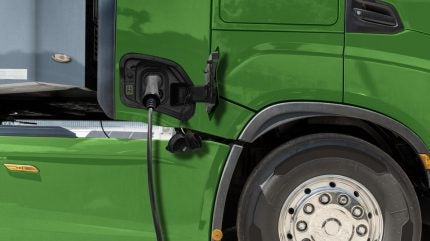
The topic of expanding e-mobility beyond cars to include trucks, vans, buses and more was a key talking point at Eurelectric EVision 2025 (EVision), with at least one attendee arguing Europe has the chance to build a substantial e-truck industry if the continent can “come together” and decide to it.
The event in Brussels brought together leaders from the energy, transport and technology sectors to accelerate Europe’s e-mobility transition.
While commercial vehicles represent a relatively small share of the global on-road fleet, they contribute to a disproportionate share of on-road fuel consumption and emissions.
HDVs make up 4% of global on-road fleets, but are responsible for 36% of on-road fuel consumption and greenhouse gases, and 73% of on-road NOx (nitrogen oxides).
It is crucial to enhance the electrification of fleets to mitigate their impact on the environment, with the transport sector accounting for 23% of the world’s energy-related CO₂ emissions.
At the EVision event, Christoph Wolff, CEO of Smart Freight Centre, hosted a presentation titled ‘The potentials of eHDVs’, which highlighted the progress that could be made with further electrification.
The presentation revealed the growing demand for e-trucks and the challenge that bigger batteries and megawatt charging will pose for energy grids.
In 2023, the global electric vehicle (EV) fleet consumed around 130 terawatt-hours of electricity, roughly the same as Norway’s total electricity demand in the same year. EVs could account for 8% of total electricity demand by 2035, up from less than 1% in 2025.
The highest fixed costs for battery electric truck (BET) operations come from using power networks. One problem that Wolff highlighted is that where the grid is cheap, it will overload, and where it is expensive, it will be underutilised.
In one of the opening events of EVision, Leonhard Birnbaum, president of Eurelectric, chairman of the board and CEO of E.ON, and Christian Levin, chair of ACEA Commercial Vehicles Board and CEO of Scania, talked on the subject of e-trucks.
Scania is a manufacturer focused on commercial vehicles, specifically heavy lorries, trucks and buses. In the talk, Levin said: “We have a chance to build the leading e-truck industry in Europe that can continue to dominate the world: it is not too late, but we as Europe need to come together and decide, just like Norway, that we are going to do this.”
Pick-up has been difficult for Scania; the talk revealed that, after much spending, its e-trucks have a purchase rate of 2%.
E-trucks and heavy-duty vehicles were a big talking point at the event as speakers explored their potential to support grid stability, especially in freight-heavy markets such as Germany and Poland. The event stressed the urgency of infrastructure upgrades and collaboration to scale up electric trucking.
In addition, the event focused on passenger EVs, with presentations on grid flexibility, V2G (vehicle-to-grid) technologies and how EVs can empower consumers and strengthen energy systems. The discussion centred around making smart charging mainstream and integrating EVs as grid assets.
Through the entire event, flexibility of both supply and demand was a consistent theme. EVs were viewed not only as transport assets but as tools to stabilise and optimise the electricity system, provided that the right digital tools and incentives are in place.



